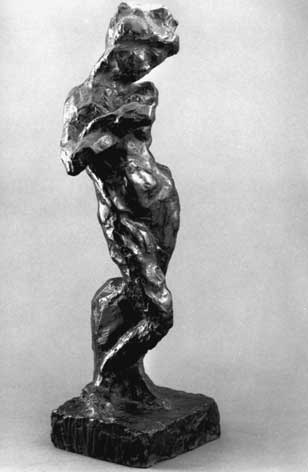Henri Matisse
This exhibition, curated by Martine Soria, offers a historical view of three distinct periods of the sculptural work of the celebrated painter Henri Mattisse (1869–1954). He studied at the Académie Julian in Paris, and also at the Fine Arts School in the same city, where he was a student of the Symbolist painter Moreau. Towards the end of the nineteenth century he met Pisarro, Derain and Vlaminck, and it was then that colour began to acquire importance in his painting. After his contact with Gauguin, Van Gogh and Cézanne his artistic language began to mature. The Cubist exercises of Picasso and Braque had only a superficial effect on Matisse, and in the early years of the twentieth century he evolved his own style of expressive, decorative abstraction after developing the rhythmical linear forms of Gauguin and the Synthetists and their palpable areas of uniform colour into a personal style of expressive composition. The technical procedures used in his painting, such as non-natural colours and figures defined rather than modelled by adjacent surfaces, also marked his sculptural work. Following a very personal course, in sculpture Matisse developed various themes that were very characteristic of his own paintings and of contemporary sculpture, such as the subordination of detail to a dominant rhythm, which can be seen in the continuous linear arabesque in Serpentine, 1909, expressive distortions with primitive resonances, and the process of simplification in his monumental series Nu de Dos (Back), 1909–1917. He worked from memory, from recollection, so that it was very important for him to work on the same subject and motif, and as a result he produced numerous series, such as Jeannette I, II, III, IV, V, and Henriette I, II, III, IV.



